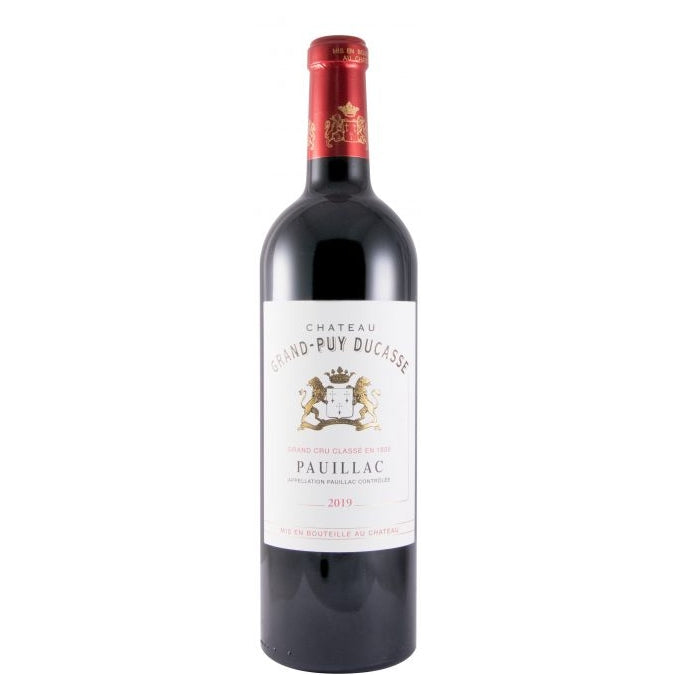Château Grand-Puy Ducasse Pauillac Red 2019
Château Grand-Puy Ducasse Pauillac Red 2019
Couldn't load pickup availability
 Château Grand-Puy Ducasse
Château Grand-Puy Ducasse
 France
France
 Bordeaux
Bordeaux
 2019
2019
 Cabernet Sauvignon and Merlot
Cabernet Sauvignon and Merlot
 18 months maturation in French oak barrels.
18 months maturation in French oak barrels.
 75cl
75cl
 14,5%
14,5%
 16ºC - 18ºC
16ºC - 18ºC
Share

The story
It all began in 1675, when Arnaud Ducasse bought a "modest" house on the riverbank in Pauillac. Little did he know that it would become a large estate that would remain in the family for almost three centuries. Pierre Ducasse, a lawyer with a passion for wine, expanded the estate considerably over three townships - Pauillac, Saint-Lambert and Saint-Sauveur - and three seigneuries: Lafite, Latour and Beychevelle. In 1820, his son had the château's technical installations built on the estuary of the Gironde. It was a bold decision at the time, and for 200 years Grand-Puy Ducasse was the only château to make its wines in the heart of the town of Pauillac. In 1855, the estate was included in the prestigious Grands Crus Classés classification, and with its 40 hectares spread over 11 different soil types, it can be considered the vineyard that best represents the diversity of Pauillac's terroirs.
Following the purchase of the estate by CA Grands Crus, a subsidiary of the Crédit Agricole Group, an ambitious plan to optimise the vineyard was launched in 2005. It is being consolidated by the current construction of a new vat room and new ageing cellars to complete this major plan, codenamed the "Renaissance Project”.
The credo of Château Grand-Puy Ducasse and its team, led by Anne Le Naour and Benjamin Cassoulet, is to strive for ever higher standards.
A rare myriad of terroirs
In the north of the appellation, the plots are situated on a fine gravelly hilltop on a marly-limestone subsoil. These poor, well-drained soils are ideal for the great Cabernet Sauvignons of the Médoc.
In the centre, the historic plots of the Grand Puy are ideally exposed on gravelly-sandy soils on a clay base. The gravel stores heat during the day and releases it at night. Great Cabernet terroirs.
To the south-east, a plateau of young Cabernets planted on clayey, sandy gravel soils is the future of the estate.
To the west, the area known as 'Artigues' (a reference to the name of the estate when it was classified in 1855) is made up of sandy soils over clay and gravel. It is ideal for the estate's Merlots.
To the south-west, podzolised soils on clay subsoil give a touch of freshness and fruitiness to their Merlots and Petit Verdots.










